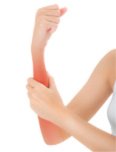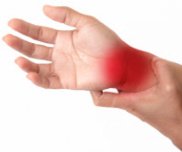Neck and Shoulder Symptoms
There are two main causes of neck and shoulder pain: structural stress and compression. Virtually all types of conditions and injuries that lead to neck and shoulder pain will have structural stress or compression as main components so these two characteristics are the ones we will be dealing with in this web site.
Structural Stress
By far, the most common, everyday source of neck pain, shoulder discomfort, and structural stress that people experience comes from sleeping on the wrong pillow. Finding one that fits your body and sleeping style can significantly reduce the stresses and strains that can affect your body for one third of every 24 hour period (while you sleep!)
Click on the link below to learn more about choosing the right pillow for your needs.
How To Choose The Right Pillow For Your Needs
The most common characteristic of structural stress or poor posture during your waking hours is chronic slouching, also known as a forward head.
Slouching forces the head forward in relation to the ribcage, causing the small muscles of the neck to have to constantly hold up the ten pound weight of your head so it doesn’t roll forward and off your shoulders. Imagine how difficult that becomes after a long day at work. Now, repeat that over and over for weeks on end. No wonder your poor neck and shoulders are in pain!
One way to get a feel for the strain of a forward head is to imagine holding a ten pound bowling ball in your hand with your arm down at your side. Now, imagine pulling your arm about 6 inches away from the side of your body. Can you imagine the amount of effort it would take to hold that position all day long? The neck and shoulder strain would be enormous.
That's how your body feels when you have a forward head, or a slouched posture.
Structural stress can affect how far you can turn your head. To illustrate this, sit in an intentional slouch and turn your head to look to the right and then to the left. Notice how far you can turn in each direction.
Now, sit up nice and straight and again turn your head to the left and right. Do you notice a difference in how far you can turn? Most people do.
Did you also notice that turning in each direction while sitting up straight is more comfortable? This is because when sitting up straight, all the muscles and bones in the neck and upper back have room to move and do not get in each other’s way.
Thousands of people suffer from pain at the area where the neck and the upper back meet. Chronic, and usually unconscious, raising of the shoulders causes the structural stress in this area and leads to a pretty surprising level of pain that travels from the upper back just above the shoulder blades and up the neck to the base of the skull. The muscle usually involved in this discomfort is known as the Levator Scapulae, the muscle which elevates the scapula, or shoulder blade.
Pain is usually felt when the head is turned, or if slouching is chronic. Slouchers will find that they unintentionally raise their shoulders just a little bit as they sit in an attempt to relieve the pain in the area. Alas, this never works and actually adds to the pain level over time.
Artificial means that raise the shoulders can also help to create this pain. Sitting with arms resting on armrests or on a table or desk can cause pain in the levator scapulae. So, too, can holding the phone between the shoulder and the ear. Find other ways to sit at your desk, workbench, or kitchen table and start using a headset or speakerphone to talk on the phone!
Compression
The bones of the neck are stacked on top of one another, like a stack of children’s building blocks.
The muscles of the neck are like two strong, wide elastic bands on either side of the neck holding the bones in a stack.
The discs between the bones form a cushioning and shock absorbing layer that protects the spinal cord and the base of the brain.
Discs can be illustrated by imagining marshmallows between the stacked building blocks. If the elastic bands, or muscles, are balanced and in good condition, there is ample space between the bones of the neck to avoid squeezing of the disc spaces.
If, on the other hand, the elastic muscles along the sides of the neck are too tight, then the disc spaces are squeezed, squashing the discs (or marshmallows in our example), leading to bulging discs. In severe compression, the walls of the discs break down and lead to herniation of the discs. Pain is the result.
Compression forces the irregular shape of the bones of the neck to come closer to one another. In this state, they tend to get in the way of one another and make it more difficult to turn the head. Often, people will begin to try to unconsciously correct this situation by shifting the head even more forward, or by raising the shoulders to create slack in the muscles at the side of the neck. More pain is the result.
To learn more about Neck and Shoulder Pain, visit the following sections:
Neck and Shoulder Pain Anatomy
Neck and Shoulder Pain Self Care
Click the block below that most closely matches your injury for more information and to find the Toolkit we offer to help you in your recovery.







